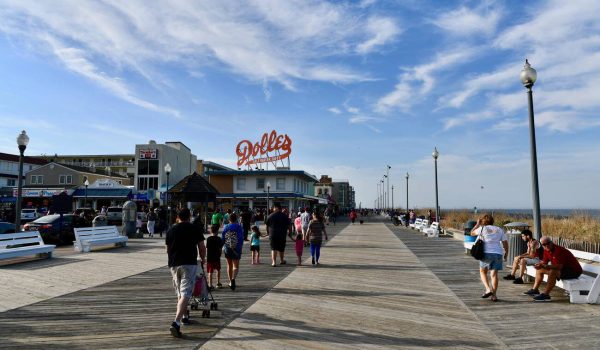The Killdeer Who Stole The Show
The maintenance team at the Cape May-Lewes Ferry takes pride in their landscaping skills. The most recent complement they received was from a Killdeer, who came to nest during the April 2020 Exit Zero Jazz Festival held on the wide manicured lawn behind the Cape May ferry terminal.
Killdeers are one of 66 varieties of Plovers, wading birds who live near shorelines. They’re named after their shrill call, which bird experts claimed mimicked a “kill-deer” sound. Considered one of the more verbal in the species, earlier birders simply called them Chattering Plovers or Noisy Plovers.
The largest of ringed Plovers, Killdeer are the only ones with a double ringed breast. Preferring sandbars and carefully manicured fields with vegetation not taller than 1″, the one pictured here nested on the gravel rocks adjacent to the Ferry lawn just in time to enjoy the music in late April. It’s normal for Killdeer to add rocks and light colored sticks to their nests after eggs are laid, but in this case the bird already had a perfect set up with the rocky gravel bordering the tightly cropped lawn.

Now appropriately named Jazzy by the terminal maintenance team, the bird was guarding three eggs that hatched in late May 2021. It’s not unusual for Killdeer to nest close to people, as they are fond of human-modified habitats including gravel rooftops. It does, however, make them particularly vulnerable to harm from pesticides, car accidents and building collisions.
Seasonal Sightings
The Killdeer now join Gannets and Red Knots as recognized heralders of Spring at the Ferry, with the other species commonly sighted on the Delaware Bay in May. Osprey are also known to build nests in April and May, with one set of Osprey parents now perennial squatters at the Lewes terminal. Each year, two Osprey take residence atop the dock in Lewes to raise their young, generally resulting in 3 chicks each year.

The Osprey, like Killdeer, tend to be monogamous, staying mated for at least an entire year if not longer. Osprey, however, frequently mate for life.
The fact that a Killdeer was spotted at the Ferry is not unusual as Cape May County claims to be “the center of the bird watching universe.” It’s a bold statement, but one backed up by the fact that 325 bird species can be spotted in Cape May in a year. Since records began being kept in the 1800s, 430 species, more than half the number of species found in all of North America, have been recorded.
If you’d like to learn more about birdwatching by season, click the button below for year-round tips and tricks.
Liked this story? Interested in other birdwatching and wildlife stories on the Delaware Bay? Here are a few related story links you might find of interest:





